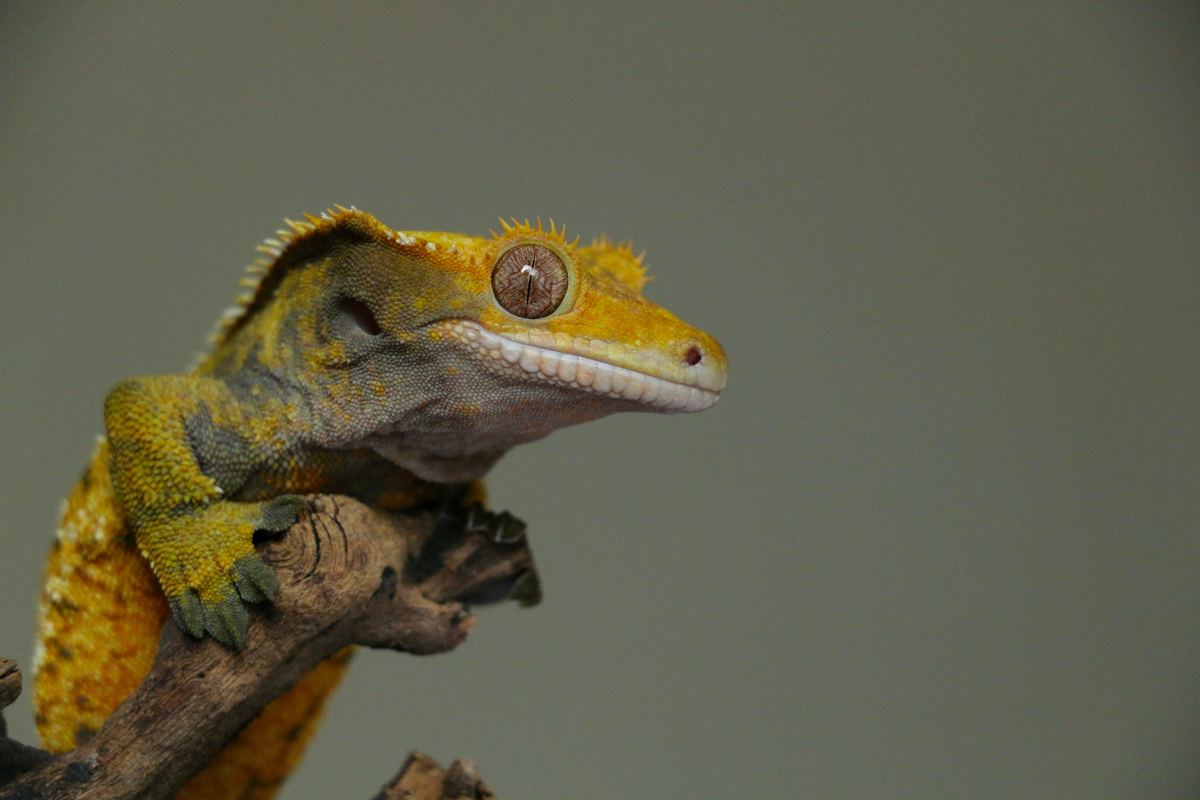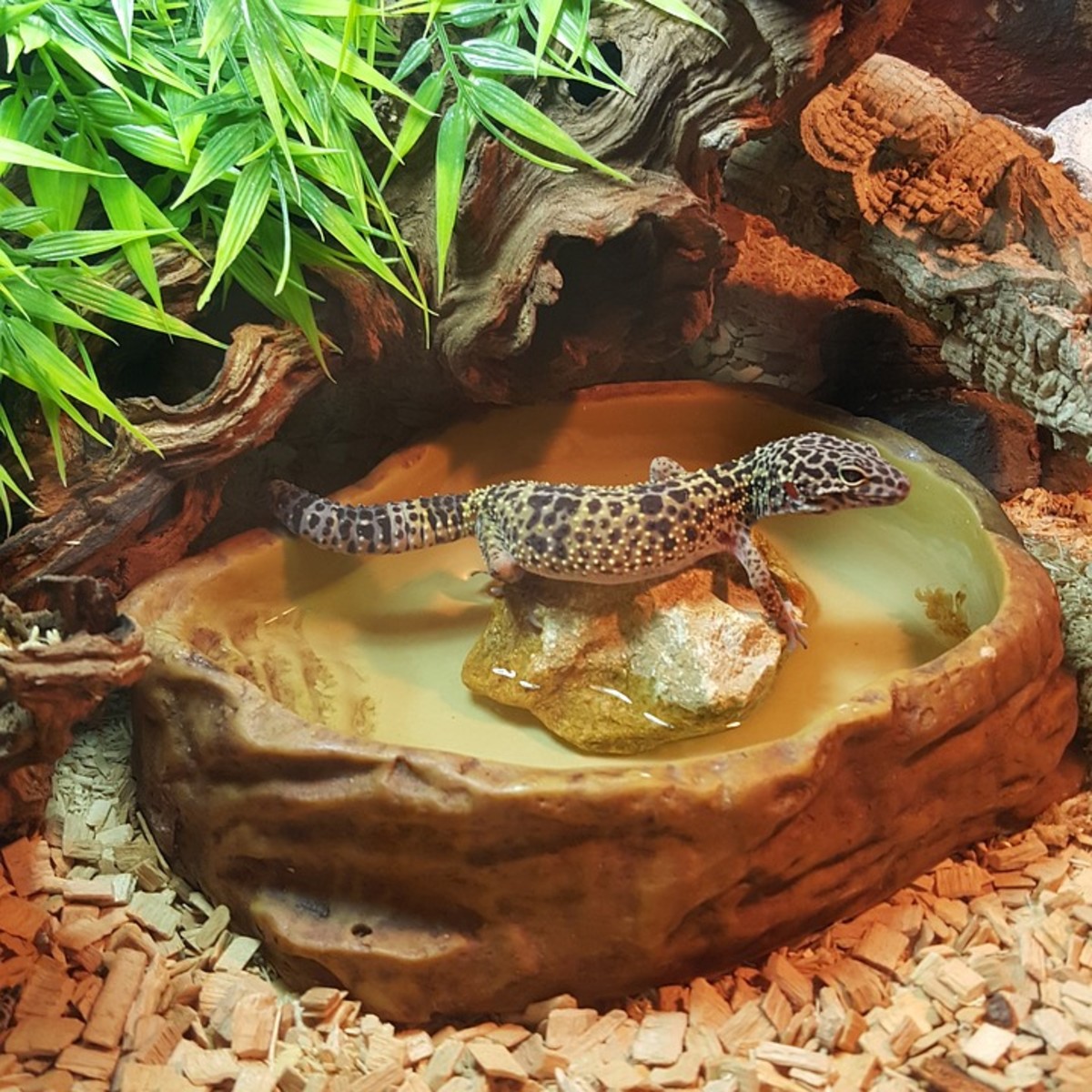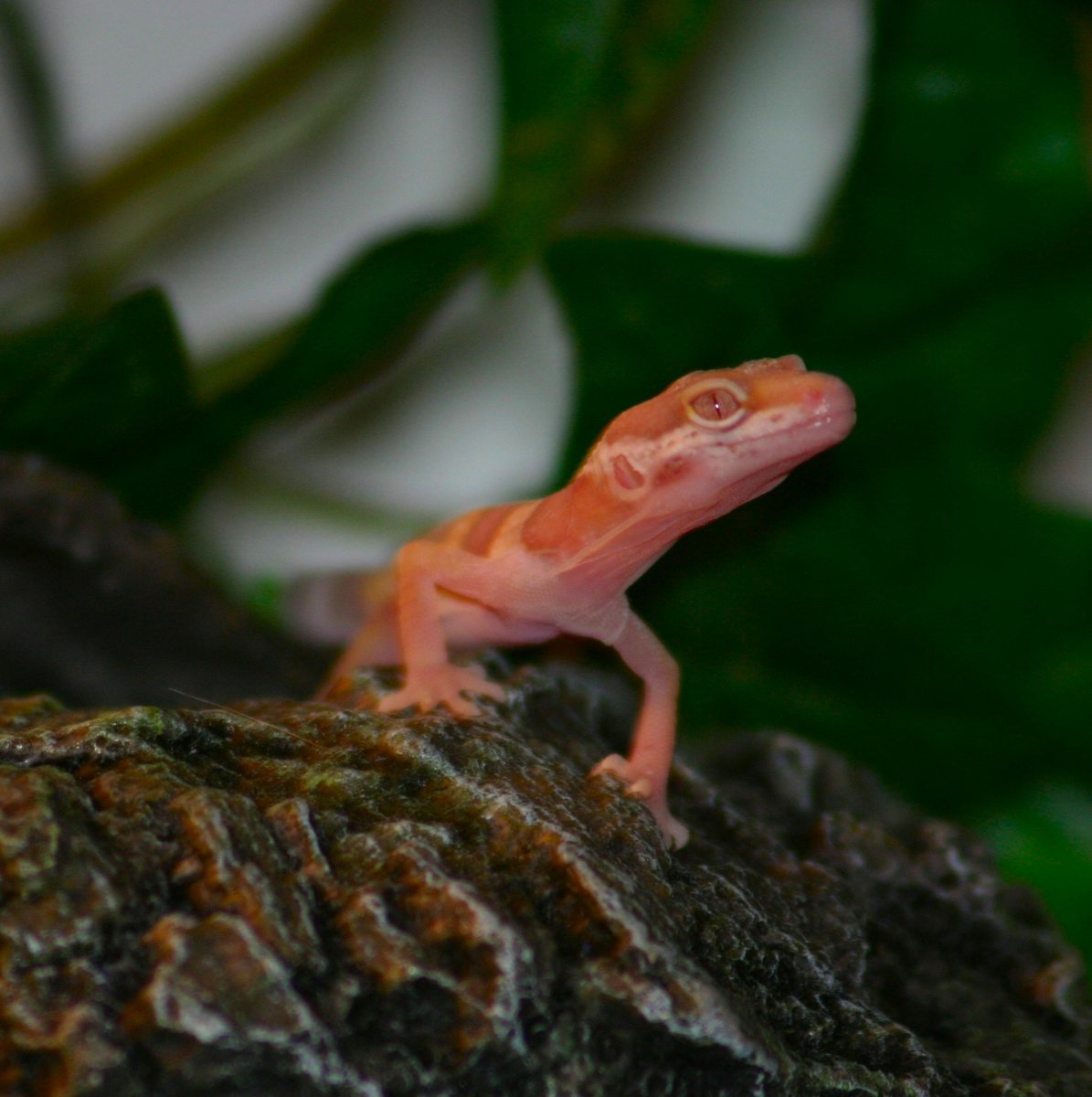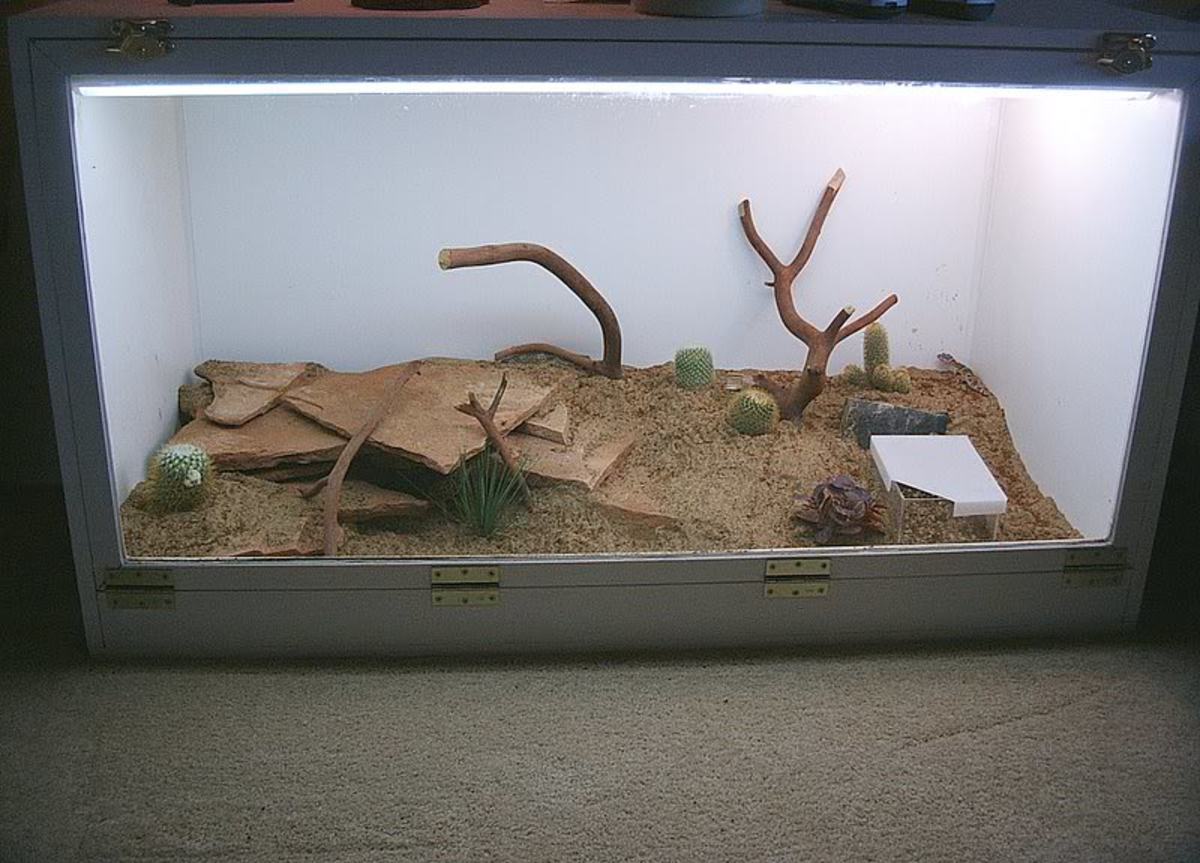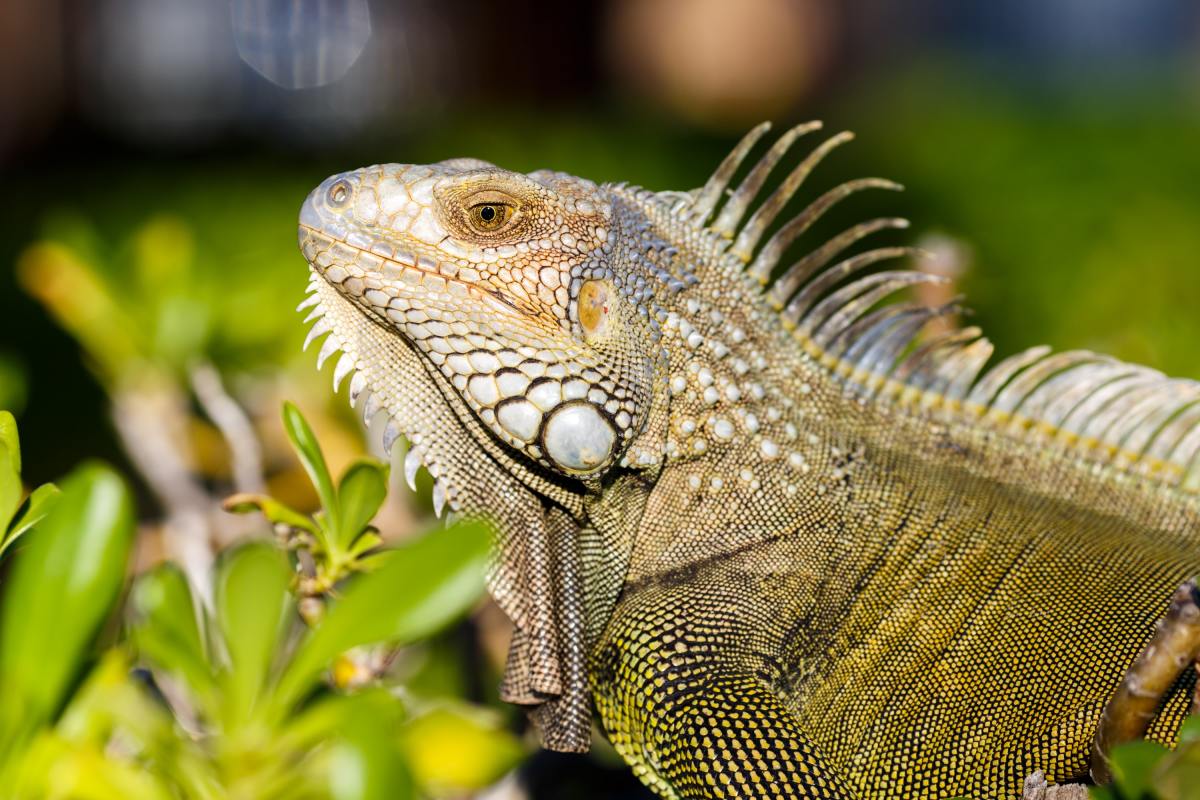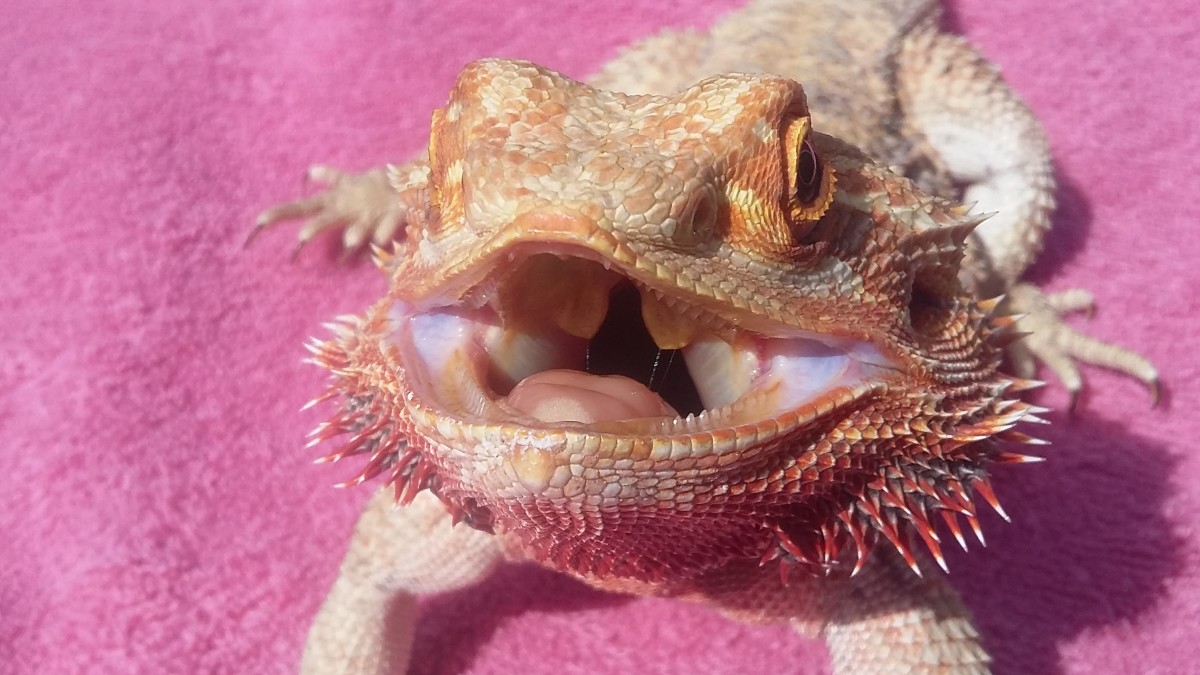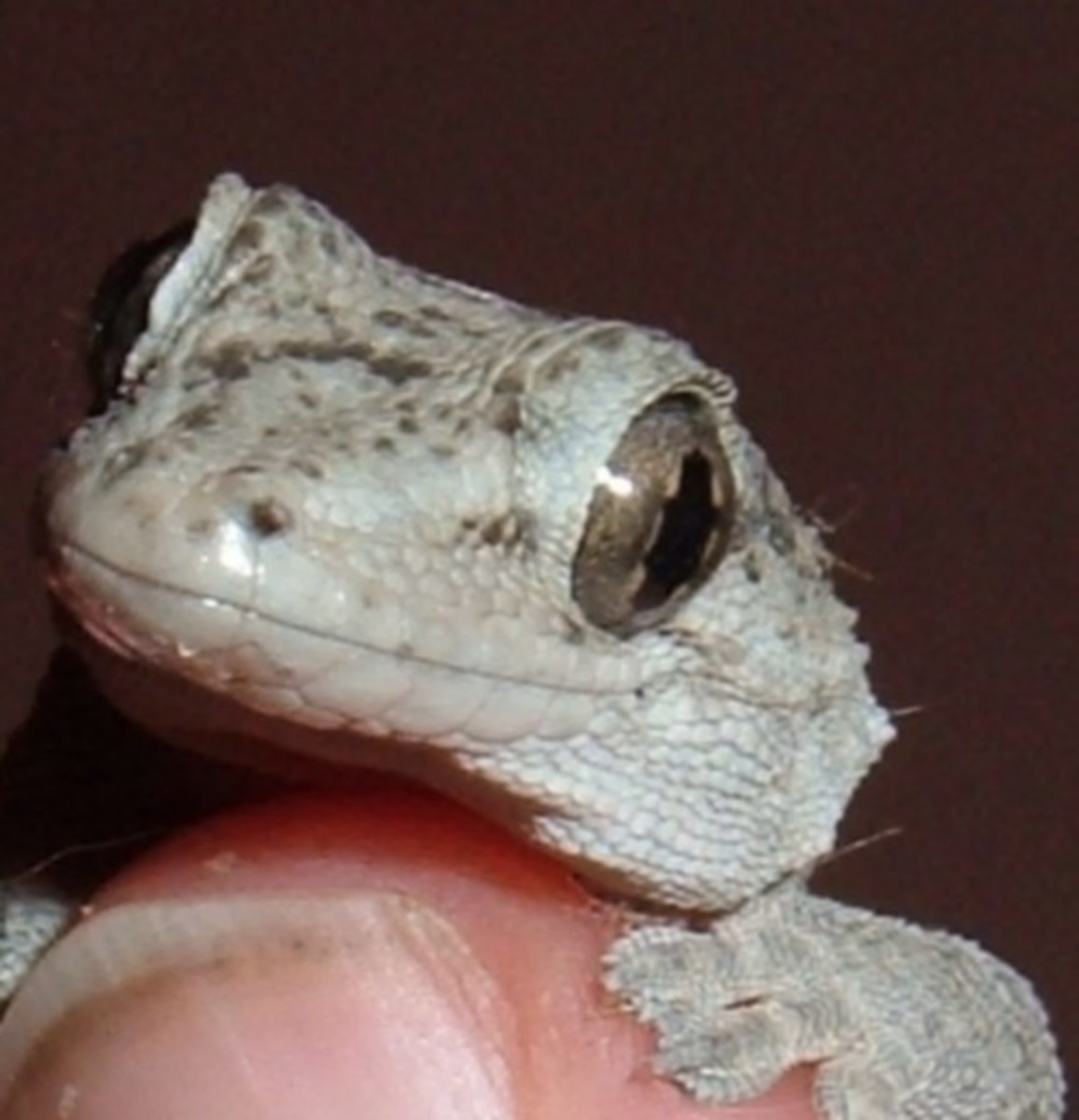Basic Care of Leopard Geckos
Basic Care of Leopard Geckos
(Eublepharus macularius)
For nearly twenty years, leopard geckos have been among the most popular reptiles in private collections. Their endearing features include their interesting colour patterns, cat-like eyes, gentle dispositions, and ease of care in the terrarium. When searching for a first “pet” lizard, most experienced reptile keepers will suggest a leopard gecko for the novice.
Leopard geckos are particularly suitable if you are facing very limited space to keep a terrarium, because large adults reach a maximum length of about eight inches. A pair of geckos, then, can be established in a standard ten-gallon-sized terrarium without fear that they will outgrow the enclosure. This size feature will make them more suitable for many people than the other good, but larger, “starter species,” the blue-tongue skink and bearded dragon.
Leopard geckos belong to an unusual and very tiny branch of the gecko branch of lizards. The formal name of their group, Eublephariidae, comes from Greek words meaning “having true eyelids.” In fact, this group contains the only geckos that have movable eyelids and can therefore blink and close their eyes. Other members of this clan include the smaller banded geckos of the United States and Central America, Africa’s fat-tailed geckos, and some poorly known species from southeastern Asia. (And no, the Geico gecko is not a member of this group; his relatives do not have eyelids, so he must have gotten his through cosmetic surgery.) In all eublepharids, the fingers and toes are long and thin, ending in small claws. None has the sticky toe-pads seen in most other geckos, so leopard geckos will not be able to climb glass or other smooth surfaces.
These small lizards have very soft skin, and they are actually fairly delicate animals. Still, they allow handling, almost never bite, and rarely move very quickly. They are nocturnal, which means that if you are handling the gecko during the day, you are keeping it from getting its normal sleep.
To best care for these lizards it is good to know something about them in the wild. Leopard geckos are native to dry areas of Afghanistan, Pakistan, India, and a few adjacent regions. Daytime temperatures there can easily exceed 105 degrees F, which is far too hot for the delicate geckos. They emerge in the evening from burrows or from under rocks and fallen logs where they sleep during the day. They get their body heat from the hot desert sand, which may take hours to become cool. The nocturnal insects and other small creatures that also come out when the sun has gone make up the natural prey of the lizards, and includes scorpions, beetles, katydids, roaches, moths, smaller lizards, and very young rodents. Because they live in places where there may be little or no rain for years at a time, the geckos get the water they need from their food.
When setting up the terrarium, then, you should provide the geckos with some sort of clean sandy substrate. If possible, make it deep enough so they can dig burrows, and keep it very slightly moist by spraying it once a week. There must be pieces of bark or flat rocks under which the lizards may hide, and even though geckos tend to hide together, be sure that there is a hiding place for each individual. Adding live or artificial plants is fine.
Provide a small dish for clean drinking water, and keep it clean and full at all times. Even though wild geckos might rarely see liquid water, pet geckos are no longer in the wild. It is up to the keeper to make sure that they do not die from thirst. Do not offer the lizards sugar water or any other mix; pure clean water is what they need, and other choices may harm the animals.
Nocturnal animals, such as the geckos, do not need an ultraviolet light, and they do not need a heat source that is on for 24-hours each day. Use a regular heat lamp, infrared lamp, or a ceramic heat lamp to warm the rocks and sand during the day. Turn the heat source off in the evening. Avoid using heat rocks because they are not necessary and may harm the lizards. If you want a lamp so you can see the lizards at night, use a special red or blue bulb instead of a regular “white light” source.
Feed leopard geckos a variety of foods that include crickets, mealworms, wax worms, earthworms, small bits of chopped fruit, and prepared packaged gecko foods. Many semi-liquid baby foods, such as strained fruits, are also good for variety. Geckos have a high need for calcium, so you should add some calcium powder to their foods about three times per week. It is best to give leopard geckos some food each day; try to avoid large meals. If they are not fed for four or five days they should still be fine, but do not treat them like snakes and feed them once a month! You can tell if a gecko is undernourished when its normally plump tail becomes thin.
When handling the geckos, it is best to let them crawl onto your palm. Try not to grab them, but if you must encircle their body to lift them, form a ring around their body with your thumb and fingers and lift gently. Never grab a gecko by the tail, because it is easily broken off if the lizard feels threatened. A new tail will grow back, but it will take months and will not look as nice as the original.
One reason leopard geckos became so popular is that they were relatively inexpensive lizards to buy and care for. A wild-caught lizard might cost $25 to $65, depending on where you get it. But over the past two decades, gecko breeders have developed a wide variety of unusual colour patterns that are not found in nature. Most designer geckos cost somewhere between $125 and $350 each, but a few types may set you back by more than $1,500! Like guppies, also bred into dozens of unusual patterns, new varieties are constantly being produced. I recently heard that a completely black leopard gecko had been produced, and its offspring will sell for about $3,000. It would be most prudent, if you are a novice, to learn the proper care of leopard geckos by starting with a pair of Mother Nature’s original recipe types.
By the way, in southern Asia many people believe that the bite from a leopard gecko is one of the deadliest that can be given by any creature. The truth is, IF you can get a gecko to bite you, it MIGHT hurt a tiny bit, but it is completely harmless.
Good luck!
Dr. Sprackland, Director of the Virtual Museum of Natural History at www.curator.com, is the author of nearly 100 articles about natural history – mainly reptiles – and several books. His latest book, “GIANT LIZARDS” second edition, was released in March 2009.

